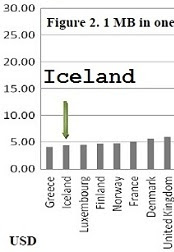[The photograph is by Jon Sullivan, his website is worth a visit. Click on the image for a higher resolution view.]


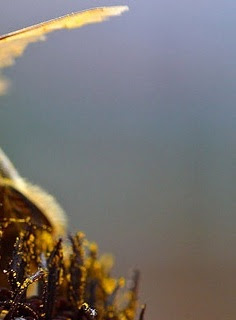
Honeybees (again again): Two additional scientific reports (links below) getting at the mechanism by which pesticides are weakening and killing off honeybees.
The thing about this photograph is that you can see individual grains of pollen. I compute (below) that one of these grains represents ~1 ppm of the weight of an average honeybee, and a thousandth of that ~1 ppb (doh!) which values bracket the range of sub-lethal toxicity in these reports. I have mentioned again and again that <5 ppb of BPA in their water stops brown trout reproduction (see here. This article is in BookSC.)
So how much of this shit does it take to impair human memory then I wonder? Human reproduction? How much of it is around? (My guesses: not much, not much, and lots.) Probably only matters until you are say, 20 or 25 years old. Don't matter much to me then; but it adds a certain dimension to my closing salutation eh? Be well.
1) Pesticide makes bees forget the scent for food, new study finds.
2) Common pesticides disrupt brain functioning in bees.
3) Pesticide combination affects bees' ability to learn.
4) Cholinergic pesticides cause mushroom body neuronal inactivation in honeybees:
Here, using recordings from mushroom body Kenyon cells in acutely isolated honeybee brain, we show that the neonicotinoids imidacloprid and clothianidin, and the organophosphate miticide coumaphos oxon, cause a depolarization-block of neuronal firing and inhibit nicotinic responses. These effects are observed at concentrations that are encountered by foraging honeybees and within the hive, and are additive with combined application. Our findings demonstrate a neuronal mechanism that may account for the cognitive impairments caused by neonicotinoids, and predict that exposure to multiple pesticides that target cholinergic signalling will cause enhanced toxicity to pollinators.
5) Exposure to multiple cholinergic pesticides impairs olfactory learning and memory in honeybees:
The experiments reported here show that prolonged exposure to field-realistic concentrations of the neonicotinoid, imidacloprid, and the organophosphate acetylcholinesterase inhibitor, coumaphos, and their combination impairs olfactory learning and memory formation in the honeybee. Both imidacloprid, coumaphos and a combination of the two compounds impaired the bees' ability to differentiate the conditioned odour from a novel odour during the memory test. Our results demonstrate that exposure to sublethal doses of combined cholinergic pesticides significantly impairs important behaviors involved in foraging, implying that pollinator population decline could be the result of a failure of neural function of bees exposed to pesticides in agricultural landscapes.
Keep in mind: a milligram (mg) is 1 thousandth of a gram, 10-3; a microgram (µg or mcg) is 1 millionth of a gram, 10-6; a nanogram (ng) is 1 billionth, 10-9. That much is easy enough - delving into molar concentration (or trying to) not so much. :-) And there is the complex business of relating doses and length of exposure ...
Average weight of a grain of pollen? See here: looks like 125-250 x 10-9 g per grain; other reports say 30 x 10-9; so let's say 100 billionths of a gram, 100 nanograms per pollen grain. An average honeybee (determined previously) is ~100 milligrams, 1/10th of a gram or so.
 I cannot access the articles, but from the diagram at the right I glean that doses in the range between 1 ppm & 1 ppb do the deed memory-wise on honeybees. That puts it somewhere between 1 pollen grain for a 1 ppm dose and 1,000 times smaller than a pollen grain.
I cannot access the articles, but from the diagram at the right I glean that doses in the range between 1 ppm & 1 ppb do the deed memory-wise on honeybees. That puts it somewhere between 1 pollen grain for a 1 ppm dose and 1,000 times smaller than a pollen grain.[At the time I wrote this I could not access the articles. Since then the authors have kindly provided copies which I have read as I am able to.]
But ... a serious caveat: I'm a knucklehead, no scientist and possibly entering the Zone of Alz' (at least it sure feels like it); so re-calculate these numbers for yourself, tell me I'm off by an order of magnitude or two.
And if I am mistaken, please to tell me gentle reader - it will be appreciated.
The object of the exercise is to somehow make the tiny amounts involved real, provide some objective correlative which can shoehorn these facts into the social imaginary.
|
I wish they could simply put links to articles they mention, for example: Cargill to boost investment in Indonesian oil palm plantations refers to this in the Wall Street Journal - Cargill Expanding Palm-Oil Plantations in Indonesia. Why not include a link?And in order to comment you must be on Facebook. Limiting.

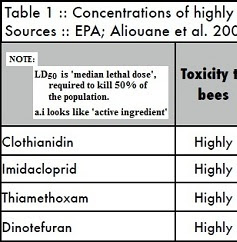


I found this chart in a 2012 'State of the Science' report by Pesticide Action Network of North America (PANNA).
US government sued over use of pesticides linked to bee harm; and details here. Videos by two of the plaintiffs are worth watching: Steve Ellis and Tom Theobald (beginning 1:30 in).
This remarkably equivocal report appeared today in The New York Times: Mystery Malady Kills More Bees, Heightening Worry on Farms; I guess this is what comes after dismantling their environment desk. A beekeeper who otherwise appears to be very actively involved in dealing with the issue, and who has suffered huge losses, is quoted saying, “I would have been insulted if you had called me that [an environmentalist] a few years ago. But ... a light comes on, and you think, ‘These guys really have something. Maybe they were just ahead of the bell curve.’” A backhanded bit of rhetoric wouldn't you say? What's up with the NYT?
It's in the language: something twigged when I saw cholinergic, but the penny didn't drop until the authors of 4) & 5) (above) kindly sent me copies and I made the connection with Acetylcholine.
Two videos: Silence of the Bees in 2007, and Vanishing of the Bees in 2009. They are both available for download on IsoHunt: Silence (~2 gigs), and Vanishing (~1 gig).
No silver bullet: Maybe it's the Alz' but these films are informative and thought provoking rather than knee-jerk ideology (to me). With the exception of the lame suggestions for action at the end of Vanishing of the Bees; but maybe such optimism & hope were still currency in 2009? I can't remember.
Symmetry with the overall environmental catastrophe: A case where microcosm & macrocosm align: effects distanced from causes - only by 6 months instead of 5-10 years; the inertia of business-as-usual, bureaucracy; lagging social imaginary.
Not entirely: here there at least appears to be moral high-ground on all sides - how do you choose between a billion people and honeybees?
One well made point is that yields from organic farms are about equivalent to farming with oil. But in practice (for an old geezer who walks where he's going) there are no real organic alternatives, in Toronto anyway. A chain of Rowe Farms outlets is appearing, but the quality is not there - and I don't mean spotted fruit; I mean very expensive food which is ... simply not very good: chickens gone bad, potatoes & onions dried out ... and so on. I tried, a number of times, but I just can't do it.
How can these motherfuckers keep up the denial patter? I ain't no saint. I am hurt and angry and I want someone to blame gawdammit!
Jay Vroom of their trade association sits there holding a copy of Silent Spring; Bayer Bee Care Tour Launches in Corn Belt States; Syngenta and Bayer CropScience propose a comprehensive action plan to help unlock EU stalemate on bee health.

 The architect - well, not architect exactly, maybe engineer and poster boy, 'How hard it is to keep from being King when it’s in you and in the situation.' - of the Green Revolution, monoculture dominance, input-intensive agriculture ... He saved a billion people! Except maybe a few thousand Indian farmers, suicide-by-pesticide (in several dimensions).
The architect - well, not architect exactly, maybe engineer and poster boy, 'How hard it is to keep from being King when it’s in you and in the situation.' - of the Green Revolution, monoculture dominance, input-intensive agriculture ... He saved a billion people! Except maybe a few thousand Indian farmers, suicide-by-pesticide (in several dimensions).Mustn't speak ill of the dead. A tool then, of a social imaginary skewed by many forces over many centuries.
Some of the honeybee poisoners: (What else can you call them?)







I would have liked to include an EPA bureaucrat but they are (of course) nameless, faceless etc., Lisa Jackson maybe. Just a small sample from a very large group.
Norman Borlaug is a hero to these people. That he is no hero to me, rather the opposite, means only that nothing I say will be listened to - obviously crazy! Oh well, all good.
We have an intellectual environment in which many scientific reports are circulated by journals which keep the reports behind high pay-walls (for obvious reasons). The hoi polloi can freely read the abstracts, and a selection of secondary news reports. If the journalists do their job (of disseminating the information rather than promoting themselves and their organizations) then one can imagine that all is well - but they don't. Luckily the authors of the scientific reports are generally good people - it is my experience that if you go to the trouble of finding their email addresses and ask them politely for a copy they almost always come through. Nonetheless there is a stratification of information, particularly on the axis of confidence - that is, the confidence to say something like, "I have looked at the scientific evidence and honeybees are being driven to extinction by corporate greed and short-sightedness," in some forum where you expect to be taken seriously and where the evidence is freely available for inspection.
A grotesque case-in-point is the campaign against wind power undertaken by Root Force and parroted more-or-less verbatim by Earth First (which is where I came upon it). The anonymous author, driven by some kind of misguided false-anarchist idealogy which says 'We must bring the system down and anything that makes the situation worse helps,' refers to a scientific study (which he or she has apparently not read) Geophysical limits to global wind power (via Science Daily); an unspecified and yet to be published study via The Telegraph - an acknowledged leader in environmental reporting; an article by David Keith (who of course has no axe to grind) from IOP again via Science Daily; and other evidence - if you believe that wind turbines kill large numbers of birds you will lap it up no doubt. Doh!
Happily, more and more scientific papers are available at no charge and the influence of rabid and/or misguided journalists & bloggers (such as myself) will perhaps (slowly) abate. [Intellectual environment? Who'm I tryin'a kid?]
Down.
























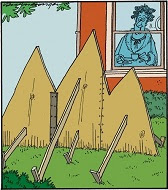


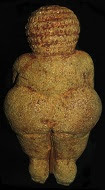
































+Clark+1t.jpg)
+Clark+2t.jpg)
+Clark+3t.jpg)






